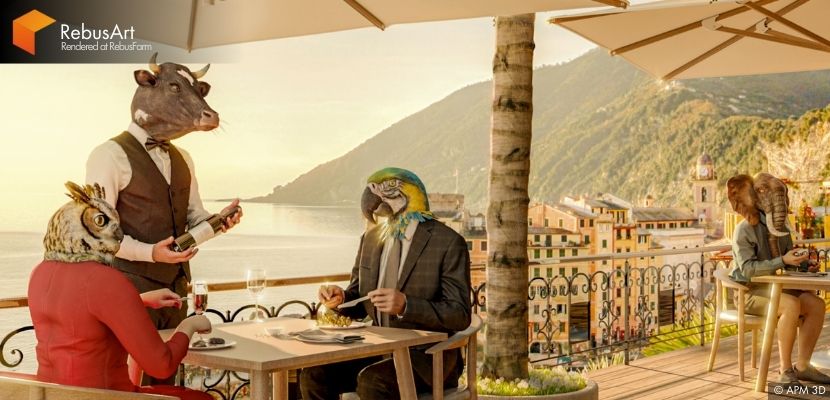
Welcome to our latest RebusArt Feature, showcasing the talented André, a passionate 3D artist dedicated to world-building and continuous learning. With a keen eye for innovation and storytelling, he pushes creative boundaries to bring unique visions to life. Join us as we dive into his artistic journey, creative process, and the inspiration behind his latest captivating project ''Anthropoformism''.
Introduction.
Please share a bit about yourself and your background as a 3D artist. Was there a particular moment, artwork, or artist that inspired you to dive into 3D art?
Hello, 3D community! I'm André, a 3D artist based in Brazil.
I've always been captivated by the power of creation, the ability to bring to life things that might never exist in reality. The idea of building entire worlds and the characters that inhabit them fascinates me. Curiosity has always been a driving force in my life. As a child, I would fill notebooks with sketches and stories, using nothing but a pencil and my imagination. Today, 3D art allows me to continue that journey, transforming ideas into immersive digital realities. This curiosity led me to discover the world of 3D in 2012.
In the beginning, I created random things without much meaning as I was still learning the software and figuring things out. I had no idea my art could be sold; I did it purely for fun.
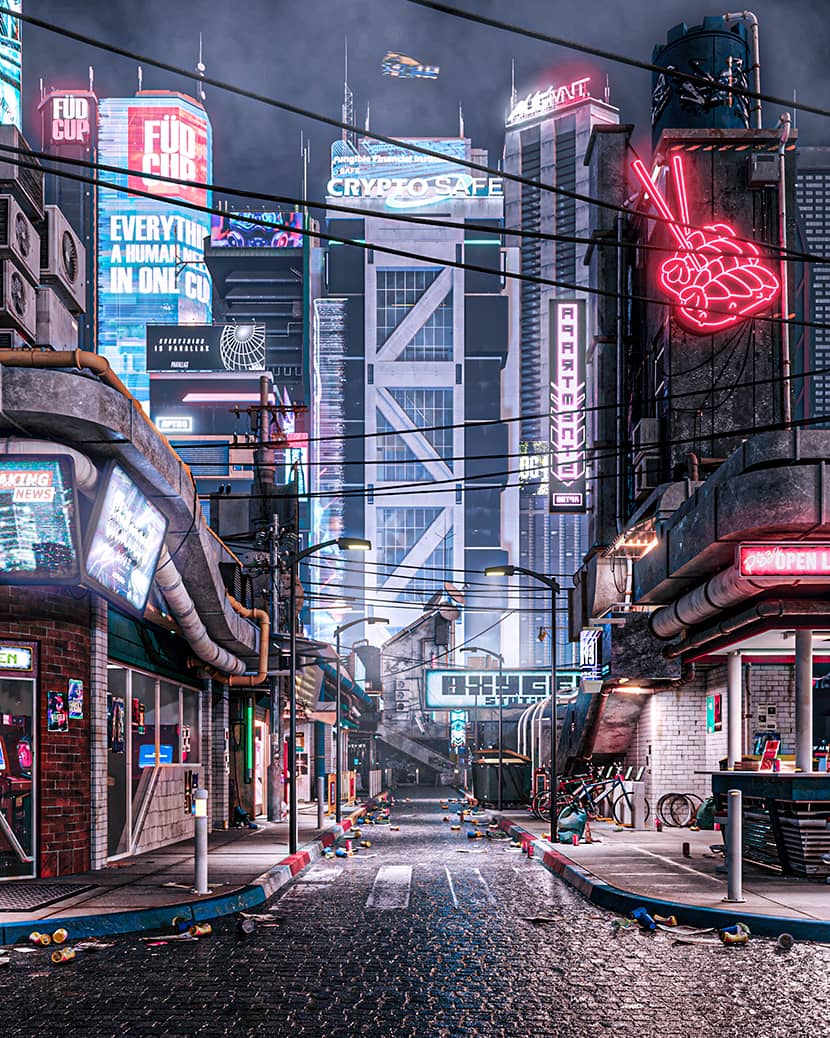
I’m truly passionate about this craft. Building 3D environments, structures, and objects not only allows me to express my creativity but also helps me relax. When I create, I lose myself in the worlds I bring to life.
One of my biggest inspirations today is Tim Miller, the visionary behind Next Level and Love, Death + Robots. His approach to 3D storytelling fascinates me, actually is the power to create entire universes within our minds.
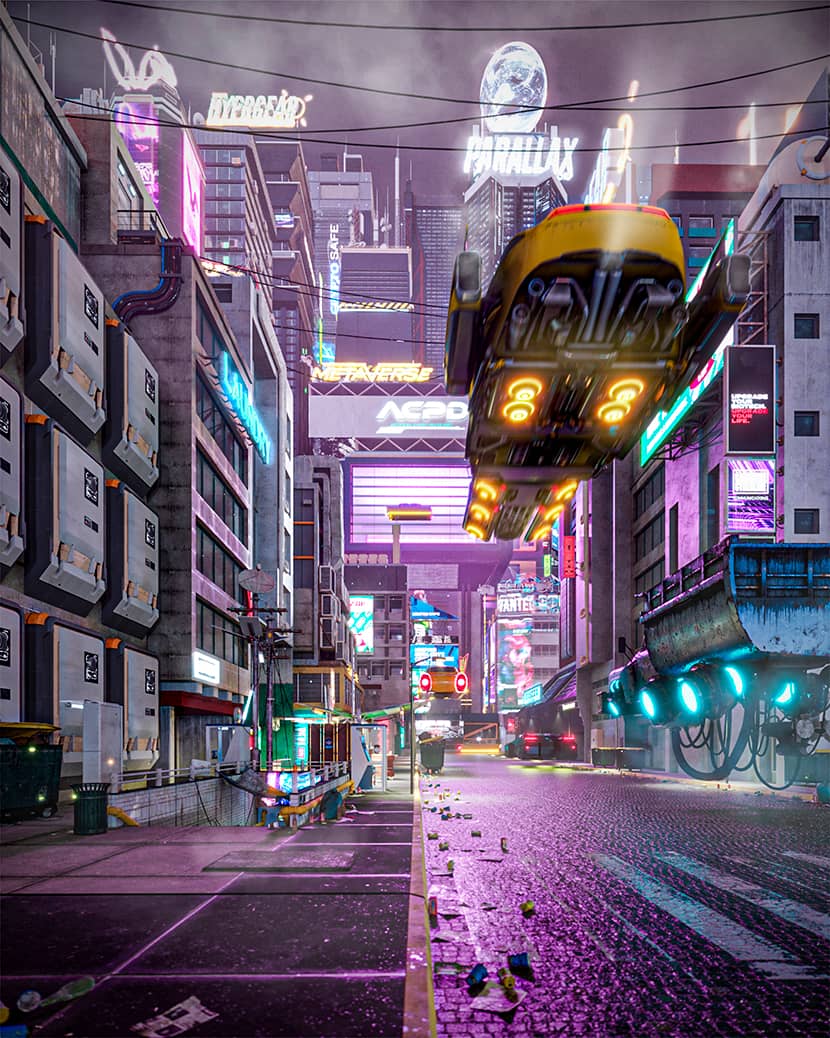
The Artist Behind the Scenes.
Could you describe your typical creative process when starting a new project, from ideation to completion?
Before starting a new project, I ask myself a series of important questions:
- What do I want to create?
- How can I bring my vision to life?
- What emotions do I want to evoke?
Once I have a clear idea, I begin by analyzing the concept and gathering references. I outline a structured plan, listing the steps I need to follow until completion.
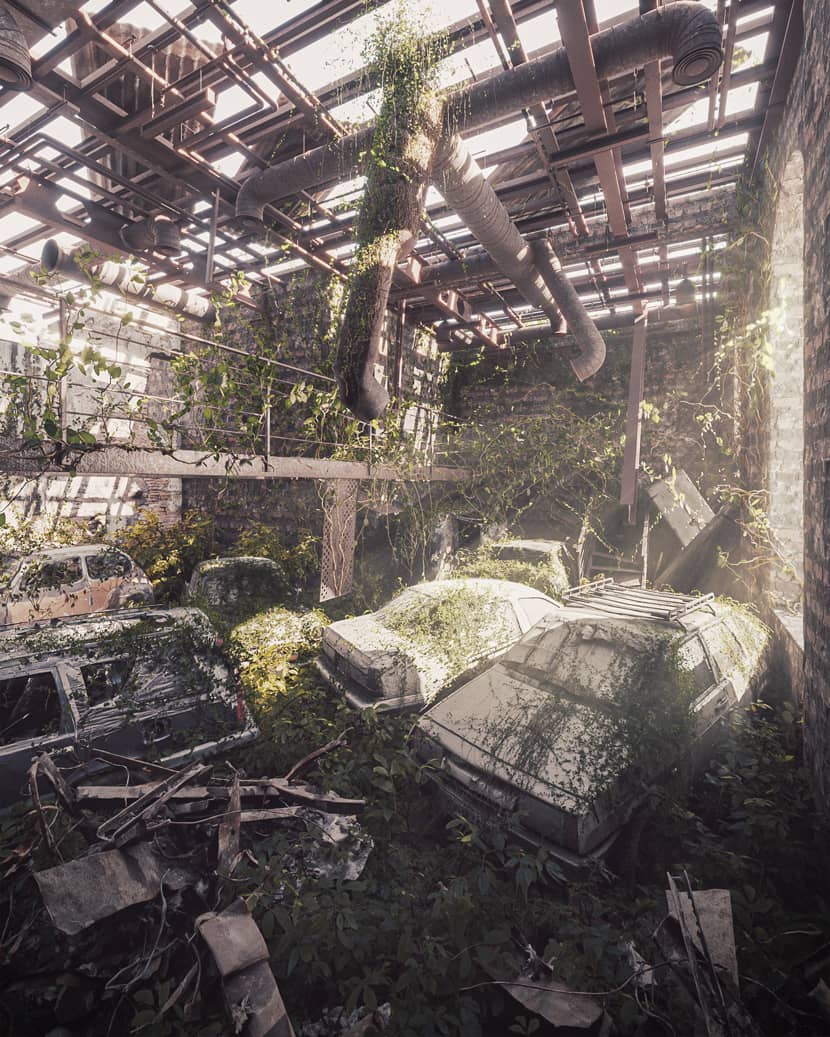
What's the one tool or technique you couldn't live without?
For me, the best tool we have is vision. When you learn to observe the world and understand how things are, it makes creation easier.
Vision is like a modeling software. When we learn to observe, we can 'render' what we see in our imagination, even before going to the computer.
What tools and software do you find indispensable in your workflow, and are there any lesser-known ones you'd recommend exploring?
For this project, I chose to use 3ds Max for modeling and Corona Renderer for rendering. Corona allows me to focus more on the artistic side and less on the technical side.
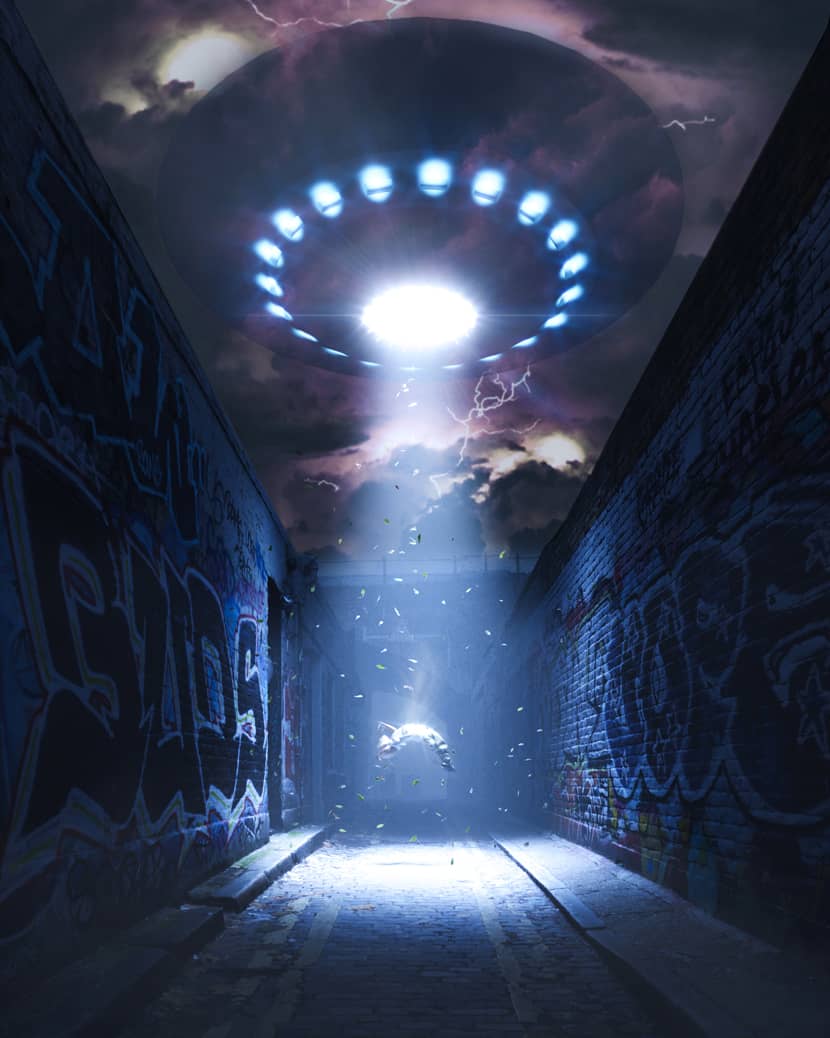
How do you stay creatively inspired when working on long or challenging projects? Are there specific rituals or habits you follow to get into a creative mindset?
Staying creative has never been a challenge for me—I live and breathe this world every day, constantly exploring new ideas and techniques. In fact, I have more ideas than I have time to bring them to life. I'm always learning, seeking to understand what I don’t know yet, and engaging with other artists to exchange ideas and insights.
Every project presents a challenge, regardless of its size. My goal is always the same: to deliver work that satisfies the client while also feeling personally fulfilling. Above all, I create renders and animations for myself. When a client loves the final result, it's simply a rewarding consequence of a well-executed process.
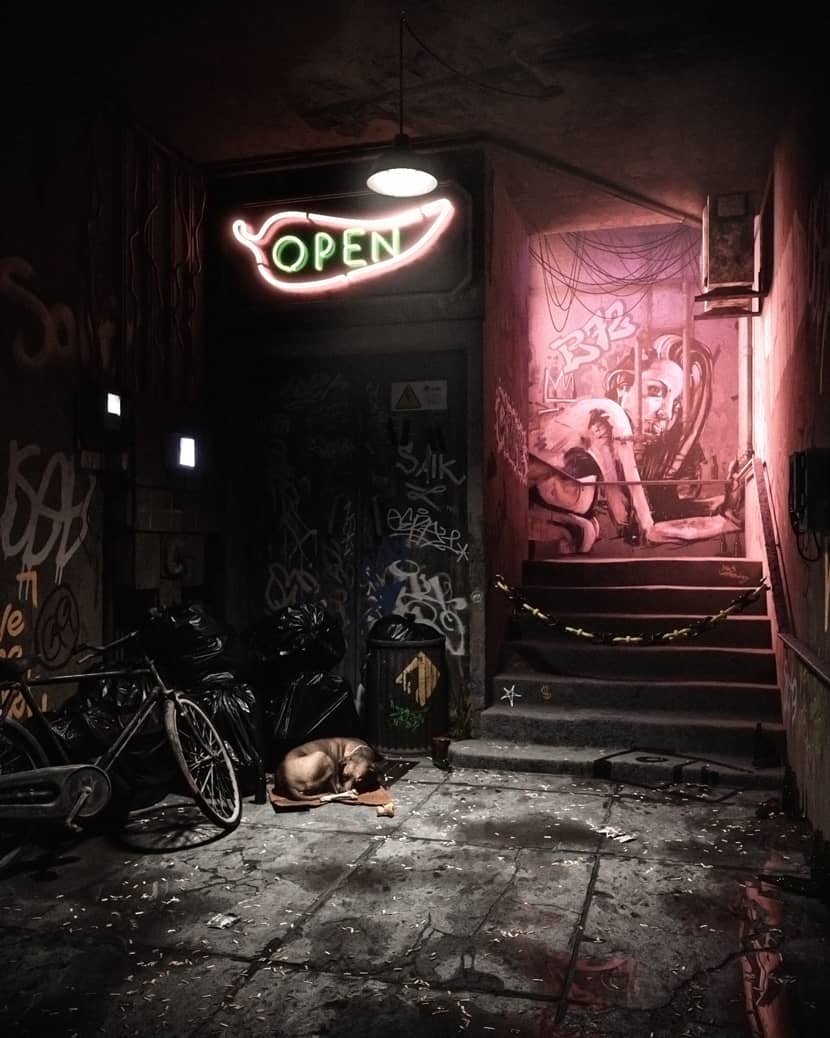
Many artists work tirelessly but rarely take the time to create something personal. Yet, personal projects are what push us to the next level. They are what make us stand out in this profession—not just as professionals, but as true artists.
What are the biggest lessons you've learned about managing deadlines and staying efficient?
One of the greatest lessons I’ve learned about managing deadlines is the importance of planning and prioritizing. I always start by breaking the project into smaller steps, setting realistic goals, and intermediate defining deadlines. This not only prevents work from piling up at the end but also allows for course corrections if unexpected issues arise.
Additionally, I've realized that clear communication with the team or clients is essential to align expectations and avoid rework. Another valuable lesson was learning to say 'no' or renegotiate deadlines when necessary, prioritizing the quality of the work without compromising my mental health.
As for efficiency, having a well-structured routine is key. I make an effort to eliminate distractions, organize my workspace, and use tools that automate repetitive tasks, enabling me to focus on the creative aspects of the project. Lastly, I’ve learned the importance of knowing when to take a break – productivity and creativity often come from moments of rest and renewal.
Project Spotlight.
Let's delve into 'Anthropoformism'. What was the inspiration and idea behind this unique project?
One night, I had a vivid dream of a world where everyone was an anthropomorphic animal, living just like we do. These creatures had jobs, attended parties, faced everyday struggles—essentially mirroring our reality but in their own unique way.
When I woke up, I felt a strange sense of intrigue and spent several minutes reflecting on what I had just experienced. My mind started racing with questions:
- How would they interact with one another?
- Could a cow drink hot chocolate?
- What would an anthropomorphic owl eat?
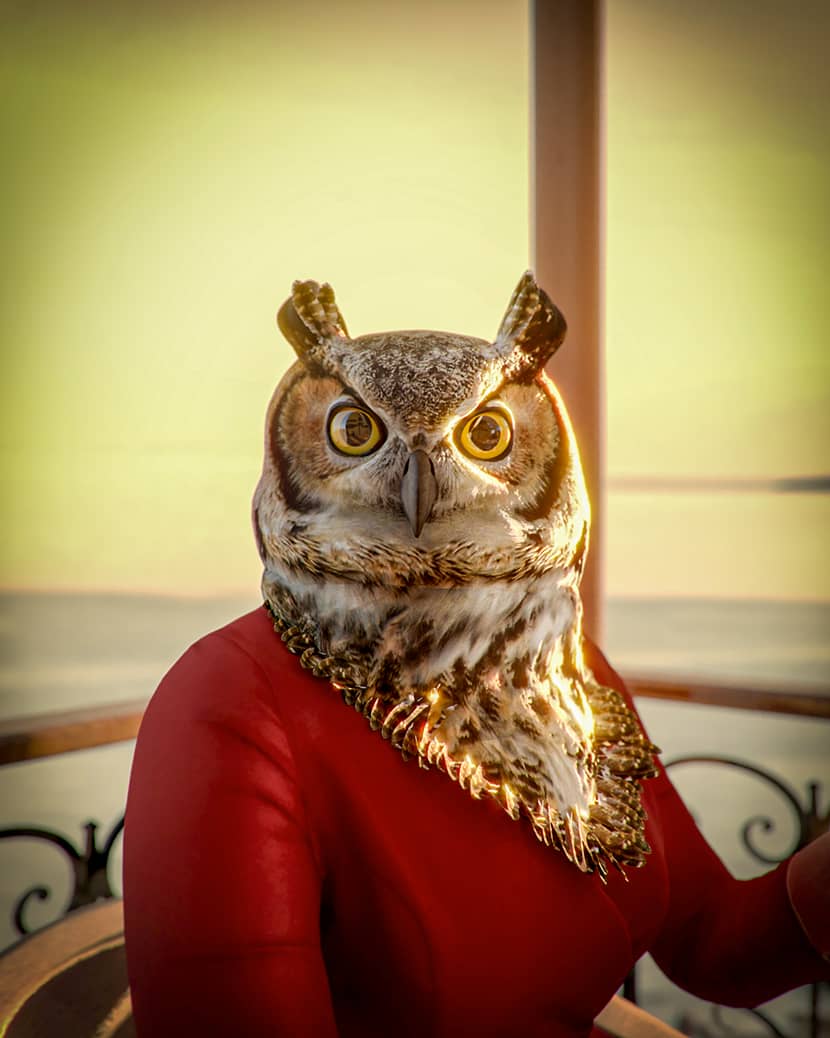
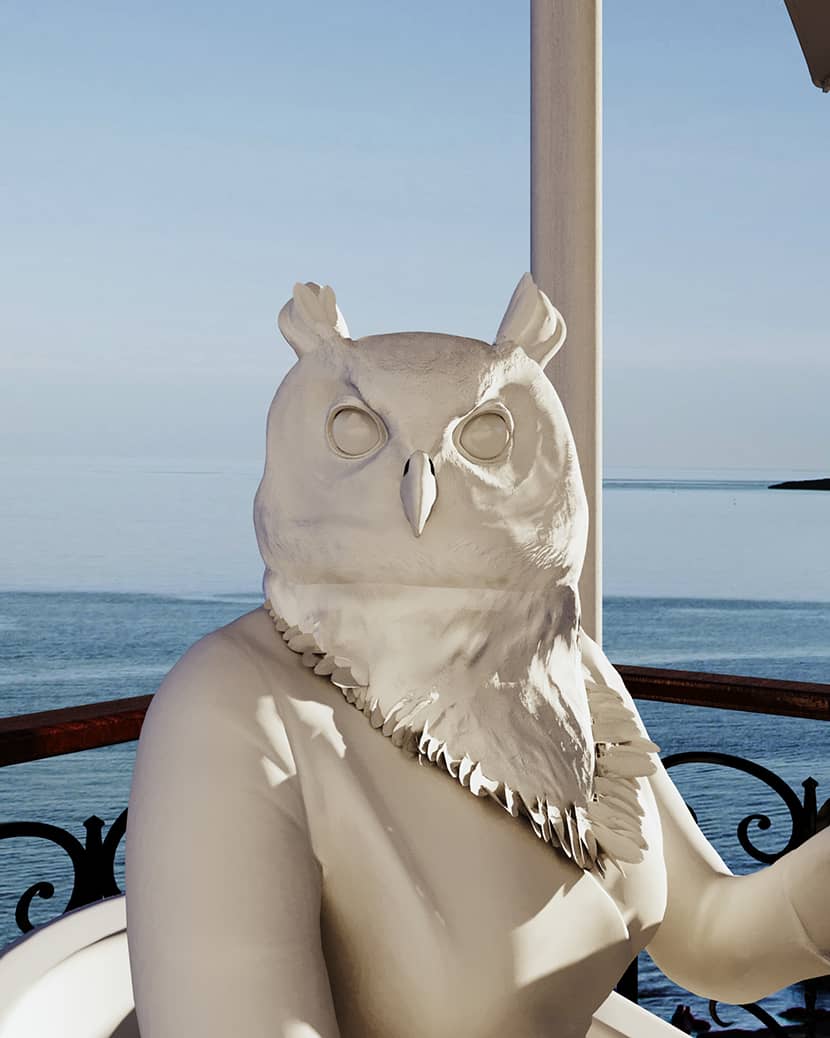
This curiosity led me to start gathering references. I built a simple scene as a foundation and then let my imagination take over, shaping the world and its inhabitants organically from there.
What software, renderer, and plugins did you use for this project?
For this project, I used 3ds Max for modeling and Corona Renderer for rendering. I chose Corona because it allows me to focus more on the artistic side of the process rather than getting caught up in technical complexities, making it easier to bring my vision to life.
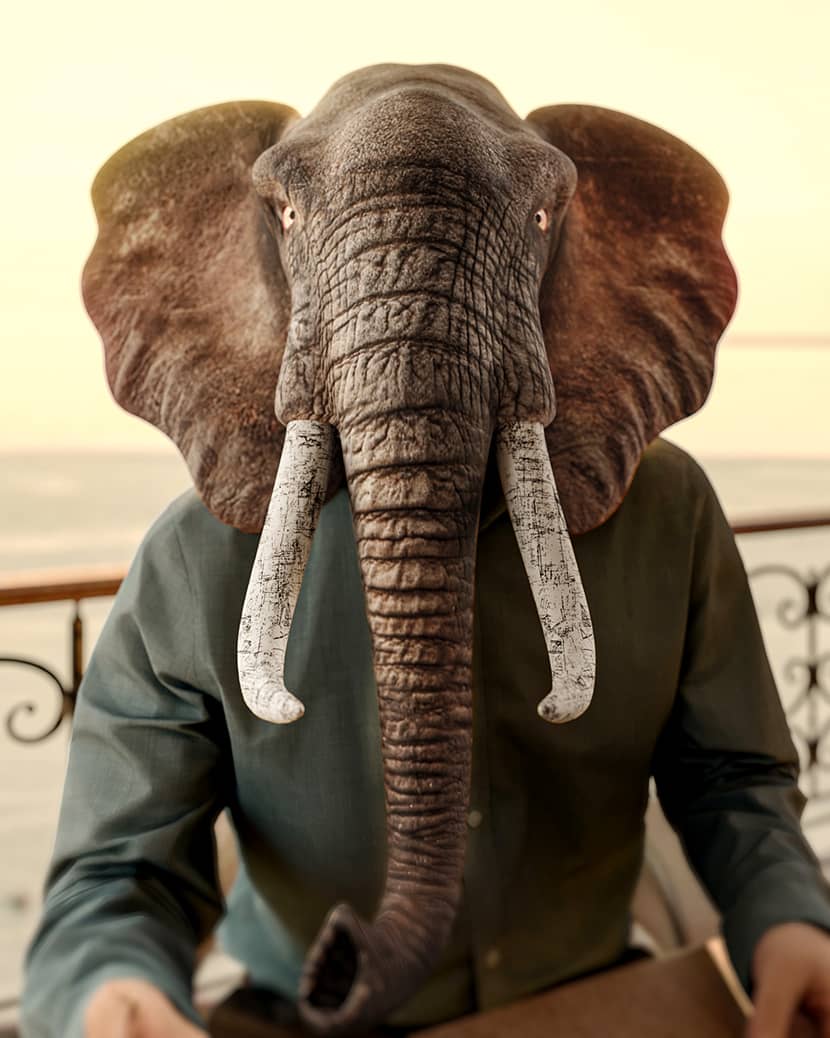
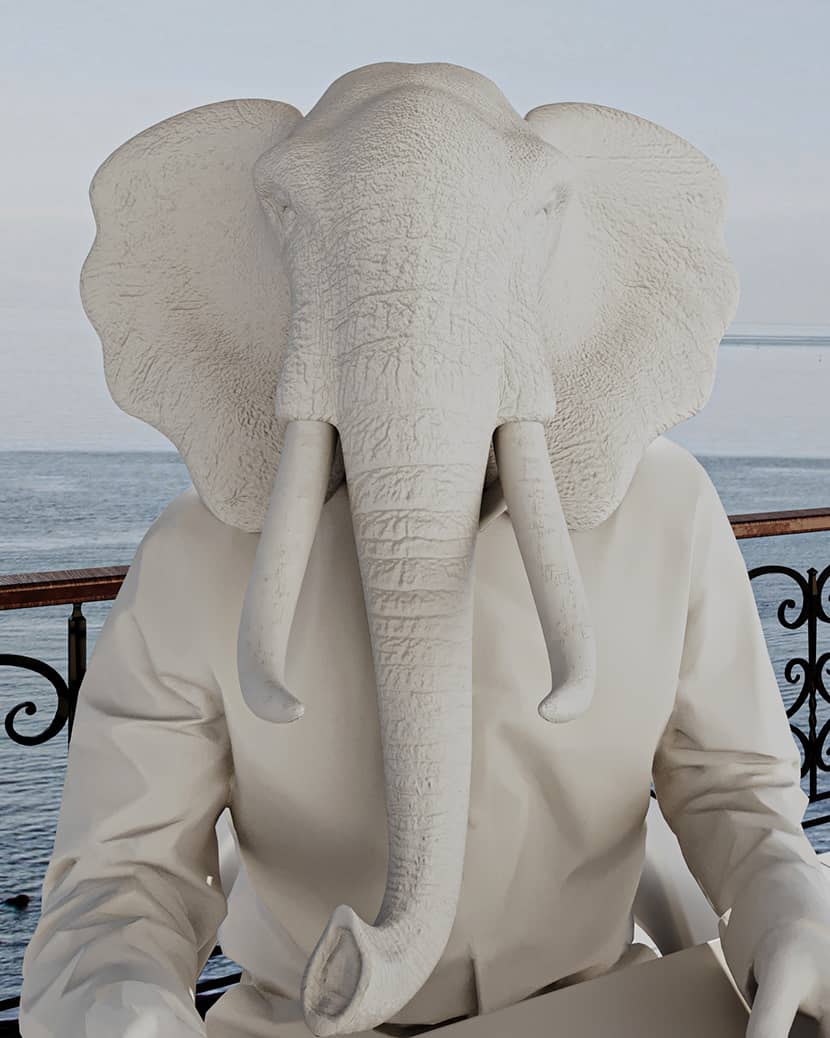
What were the main challenges you encountered during development?
The biggest challenge was making the scene feel natural and believable. To achieve this, I placed the characters in a familiar, everyday situation—enjoying lunch in a beautiful setting with a great view and good company.
I wanted to move away from obvious or cliché ideas, like an anthropomorphic samurai bear or a warrior lion. Instead, I carefully selected animals that defied those expectations, creating a more unique and engaging narrative.
How did rendering this project with RebusFarm impact your workflow, and what features stood out?
Using the RebusFarm Render Farm was a game-changer for my workflow. Offloading my project to the cloud significantly reduced rendering times, especially for complex, resource-heavy scenes that would have otherwise slowed down my local machine.
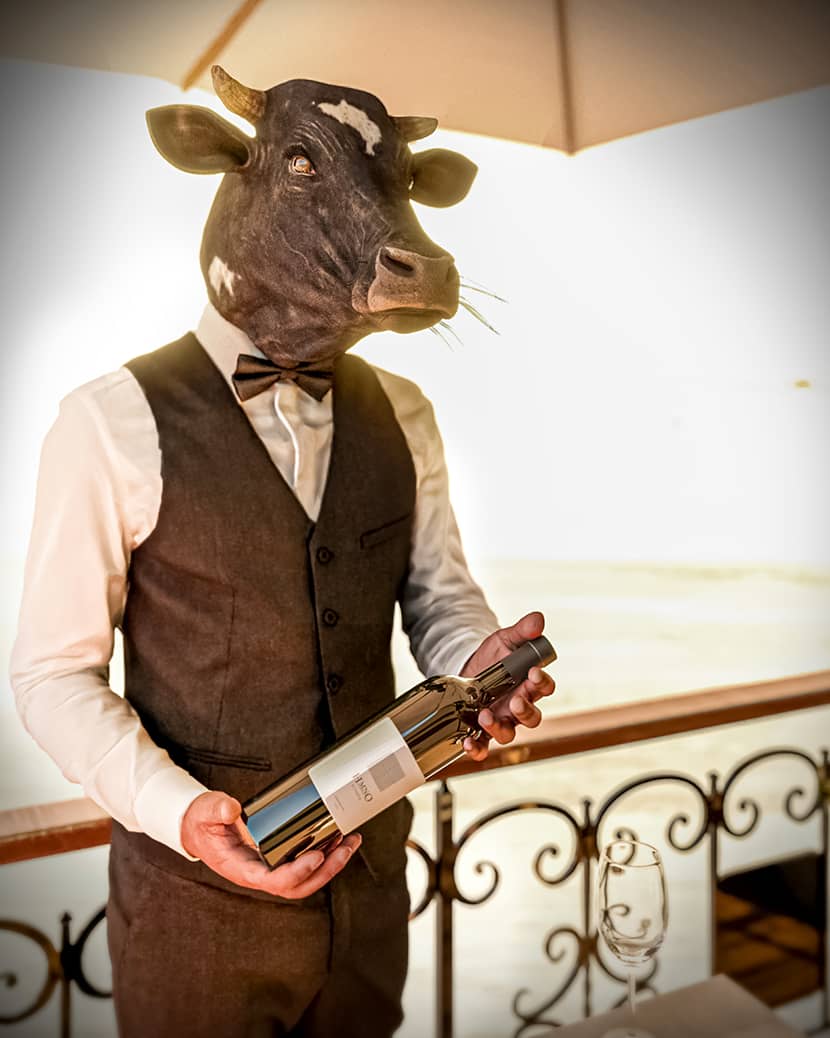
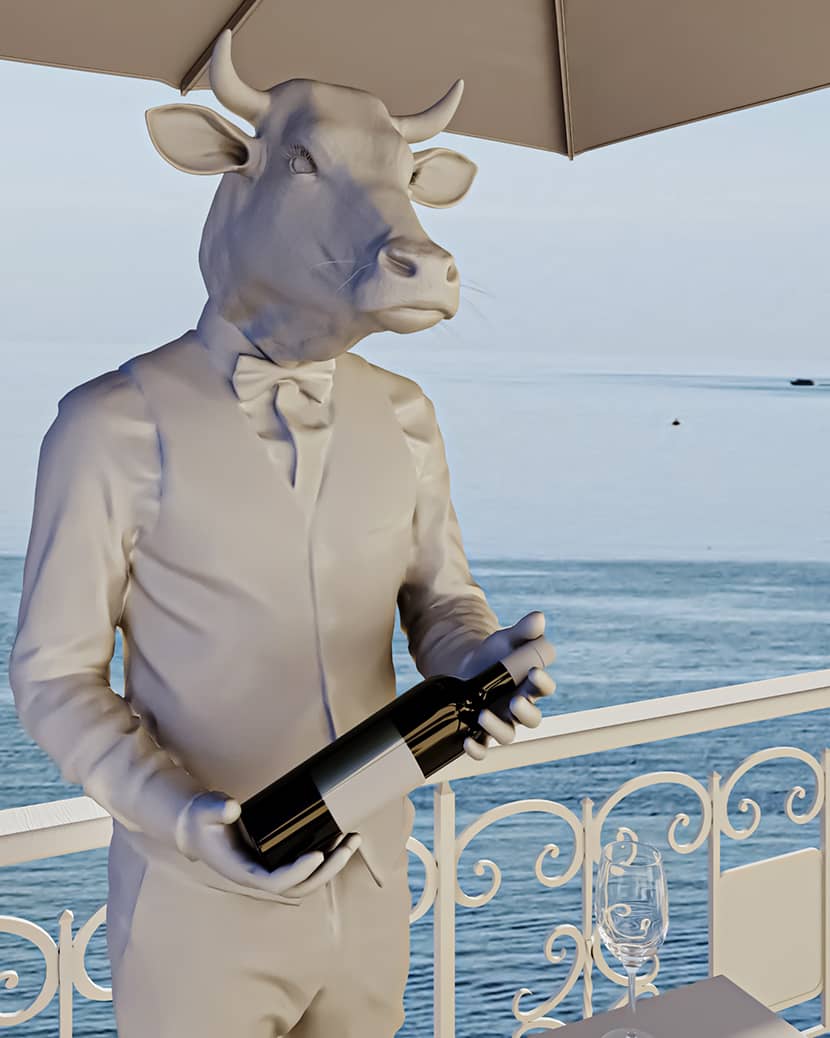
What stood out the most was the seamless integration with my preferred software and the fast, efficient technical support. Additionally, the cost and time estimation feature proved invaluable, helping me plan deadlines more effectively and keep my budget under control.
Overall, RebusFarm not only accelerated my project delivery but also gave me greater confidence in meeting deadlines. It allowed me to focus more on the creative process without being limited by technical constraints.
Can you provide some step-by-step breakdowns of the project?
Bringing this scene to life was an exciting process, and here’s how I approached it step by step:
- Selecting the Animals: The first step was choosing the right animals for the concept. I wanted them to feel natural and relatable, so careful selection was key.
- Finding the Right Poses: To ensure realistic and expressive body language, I referenced human poses that best suited my idea.
- Imagining the Environment: Initially, I considered an indoor restaurant setting, but I ultimately opted for an outdoor location. This choice allowed for more depth, natural lighting, and an expansive background, adding scale to the scene.
- Merging Human and Animal Features: One of the biggest challenges was seamlessly blending the animals’ heads with human bodies. This required multiple adjustments to clothing, necks, and proportions. I used feathers and tighter collars to create a natural transition, making the fusion feel believable.
- Detailing Eyes and Skin: I carefully worked on the eyes, skin textures, reflections, and imperfections to ensure the animals looked lifelike and expressive.
- Lighting the Scene: To achieve a tropical, sunlit atmosphere, I positioned the lighting to complement the outdoor setting, with the ocean in the background to enhance the mood.
- Final Touches in Photoshop: After rendering, I took the images into Photoshop for final adjustments. I enhanced details, corrected colors, and refined certain areas to bring out the best in the composition.
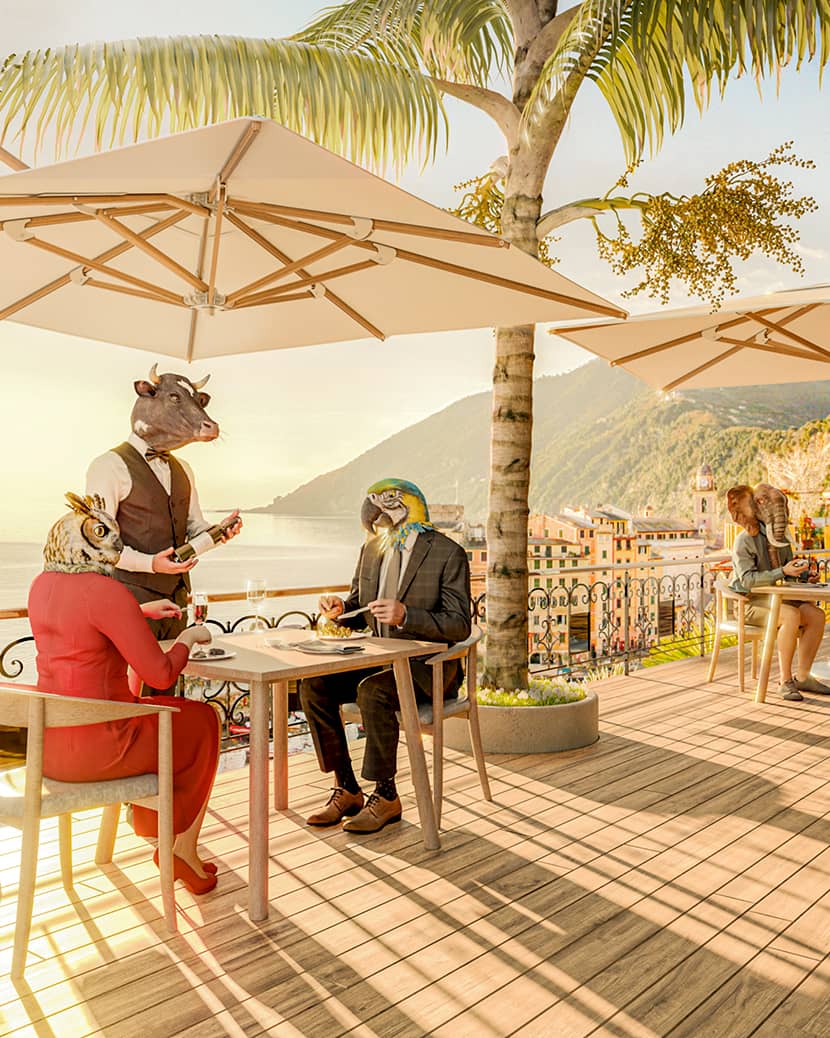
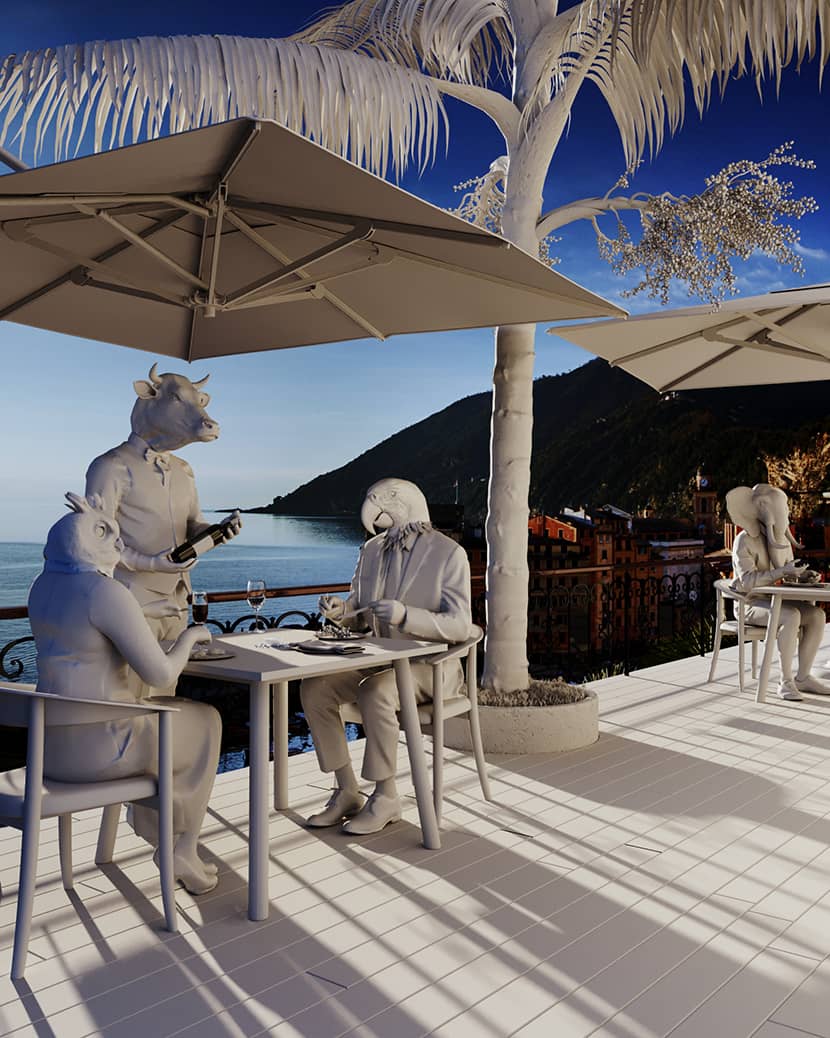
And that’s how these images came to life—from a dream to 3D reality!
Closing.
Looking back at your journey as a 3D artist, what do you consider to be your most significant milestone or achievement thus far, and why?
Looking back, one of the most significant milestones in my career was working on a confidential project that I can’t reveal just yet. Without a doubt, it was the most impactful experience I’ve had so far, challenging me on multiple levels and providing invaluable lessons.
This project gave me firsthand experience in collaborating with large companies and diverse teams from around the world. It pushed me to refine my time management skills and reinforced the importance of clear communication and adaptability—especially when working under tight deadlines.
Beyond the technical and creative growth, this experience solidified my confidence in handling high-stakes projects. It also expanded my perspective on what’s truly possible in the ever-evolving world of 3D art.
Are there any new art movements, developments, or industries (e.g. AI, gaming, film, virtual reality) that you're excited to explore further?
Currently, I’m excited to dive deeper into AI and explore its potential in the creative process. As a powerful tool, AI can significantly enhance workflows, opening up new possibilities for efficiency and innovation.
For me, staying updated is essential—not just to keep up with industry trends, but to continuously evolve as an artist. Embracing new technologies like AI allows me to push boundaries and refine my craft in ways that were once unimaginable.
What advice would you give to aspiring 3D artists who are just starting their careers or looking to take their skills to the next level?
For those just starting in the world of 3D, regardless of the specific field, my biggest piece of advice is simple: do what you love. Passion should always be your driving force—don’t chase money or recognition as your primary motivation.
Never stop learning. The industry is constantly evolving, and staying updated is crucial. Surround yourself with like-minded people—artists who share your curiosity and drive for improvement.
If you focus on honing your craft and delivering quality work, success will naturally follow. Money and recognition are simply the results of dedication and well-executed work.
Finally, what's next on your artistic horizon? Are there any exciting projects or goals you're eager to pursue soon?
For nearly two years, I’ve been working on my animated short film, an emotional story about a robot and a cat—a project I’ve dreamed of bringing to life for a long time.
From the very beginning, my goal was to create everything on my own, pushing myself to learn animation, texturing, scriptwriting, and many other aspects of the filmmaking process. This hands-on approach has allowed me to acquire new skills in a natural and immersive way, making the journey as valuable as the final product itself.
I can’t wait to share more details soon!
Thank you for sharing your insights and expertise with us!
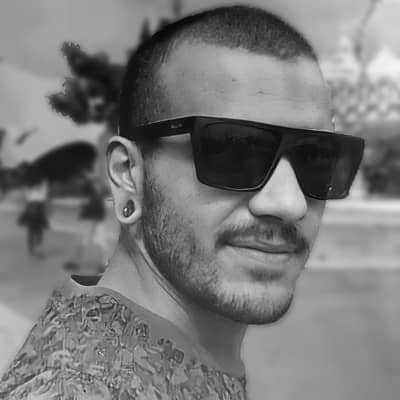
About the artist
André is a 3D artist with a deep passion for world-building and continuous learning. For him, each project is more than just a creation—it’s an opportunity to refine his skills, explore new techniques, and push creative boundaries. He is always in search of innovation, looking for ways to enrich his work and expand his artistic vision. To him, growth is a never-ending journey, and every challenge is a chance to evolve.
